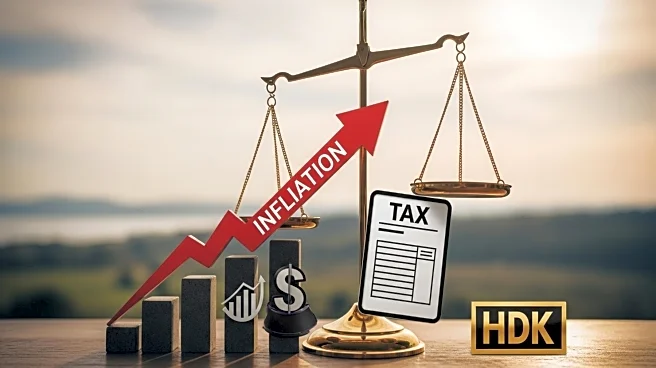What's Happening?
The IRS has announced new regulations affecting 401(k) contributions for high earners, set to take effect in the 2026 tax year. These changes are part of the SECURE 2.0 Act, a law enacted in 2022. Under the new rules, individuals who earned $145,000 or more in gross income the previous year will be required to make catch-up contributions to after-tax Roth accounts instead of traditional before-tax accounts. Currently, workers aged 50 and above can choose between before-tax traditional accounts and after-tax Roth accounts for their catch-up contributions. This change will eliminate the upfront tax break that high earners receive from before-tax contributions, impacting their taxable income. The regulations will affect workers over 50, who can make an additional $7,500 in catch-up contributions, and those aged 60 to 63, who can contribute up to $11,250 in 2025.
Why It's Important?
The shift in 401(k) contribution rules is significant for high earners, as it alters the tax benefits associated with retirement savings. By mandating after-tax Roth contributions, the IRS is removing the immediate tax deduction benefit, which could increase the taxable income for these individuals. This change may influence retirement planning strategies, as Roth accounts offer tax-free growth and withdrawals, contrasting with the traditional accounts' upfront tax break but taxable withdrawals. Employers may need to adjust their retirement plan offerings to include Roth options, as some plans currently lack them. The broader impact on retirement savings behavior and tax planning could be substantial, affecting how high earners manage their finances.
What's Next?
Employers are expected to expand their retirement plan options to include Roth 401(k) accounts, as the new regulations will require these options for catch-up contributions. Fidelity and Vanguard have already increased the availability of Roth options in their managed plans. High earners will need to reassess their retirement strategies, considering the long-term benefits of tax-free growth and withdrawals from Roth accounts. Financial advisors may play a crucial role in guiding individuals through these changes, helping them optimize their retirement savings in light of the new tax implications.
Beyond the Headlines
The regulatory shift reflects a broader trend towards encouraging tax-free growth in retirement savings, potentially influencing future policy decisions. The emphasis on Roth accounts aligns with a growing preference for tax-free withdrawals, which could lead to increased adoption of Roth IRAs and other similar savings vehicles. This change may also prompt discussions on the balance between immediate tax relief and long-term financial planning, highlighting the evolving landscape of retirement savings in the U.S.











